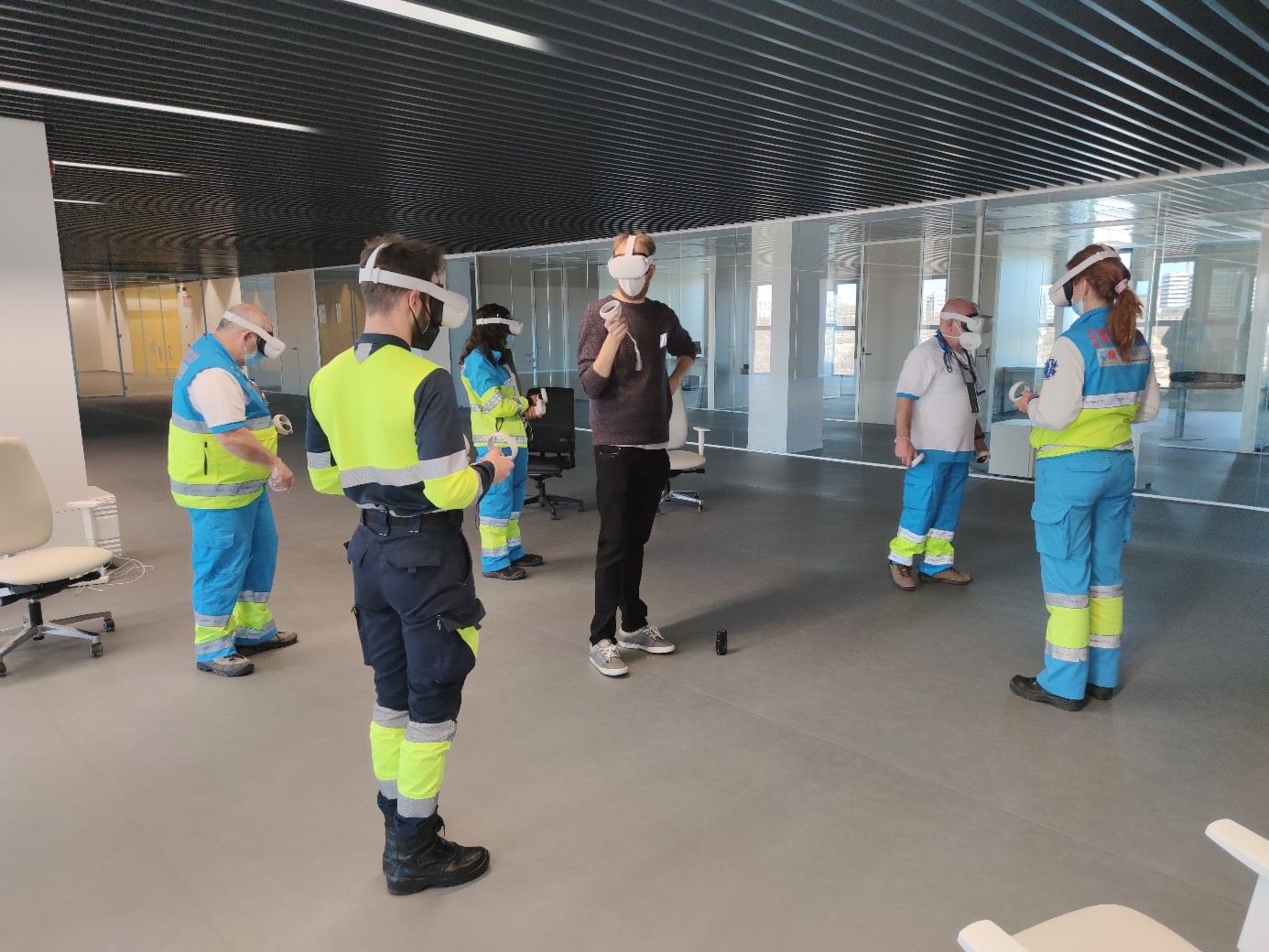The conduction of the end user requirement workshops marks the first important phase in the MED1stMR project. Our project team, led by AIT – Austrian Institute of Technology, completed several workshops in the previous months and gathered valuable insights into the wants and needs of the end users.
Status of requirement phase
The project team has conducted five requirement workshops at the end user premises across Europe in Greece, Austria, Germany, Spain, Belgium so far. An interesting aspect was that the participants had very diverse roles within their organisations, ranging from medical first responders and trainers to policymakers and heads of medical departments. This is of added value for the project, since the results, therefore, cover a broader perspective in the field of medical first response. All involved people were very motivated during the workshop session and especially when using the co-creation methods.
Co-Creation for Mixed Reality in Virtual Reality
AIT has developed an innovative VR Co-Creation tool to give participants a first insight into the potential of creating and utilizing Virtual / Mixed Reality training scenarios. It allows multiple people to collaborate live on a virtual table and create scenarios in one of three different environments – a tunnel, collapsed buildings, and a highway. A variety of objects, vehicles and people (e.g. victims and first responders) can be placed in these environments in order to plan and facilitate discussions about the goals, approach and specific challenges of the training. With the press of a button, all participants can also switch into a life-scale view of the scene where they can freely move around, giving them insights into how their collaboratively created scenario would be perceived by the future trainees.
First results and insights
Various needs and perspectives were reflected through the workshops – from geographical needs for MR environments (e.g., earthquake scenarios) to organisation-specific needs (e.g. users as voluntary or ‘professional’ MFRs)” to views from different roles (e.g. “on the ground” MFRs, trainers, policy perspective). The next challenge will be to consolidate all these various perspectives into one direction for the project. This is crucial to convince stakeholders of the added value of the innovative training developed in MED1stMR.

